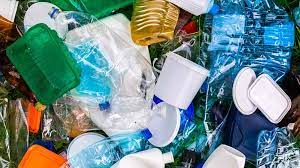How HDPE Recycling Contributes to a Circular Economy
High-Density Polyethylene (HDPE) is one of the commonly used plastics. It is renowned for its strength, durability and flexibility. It’s used everywhere from milk jugs and detergent bottles to piping as well as plastic bags. As the awareness of environmental concerns increases recycling HDPE has become more and more crucial. Here’s everything you need know about HDPE Recycling.
What is HDPE?
Recycle HDPE is a form of thermoplastic made from petroleum. It is distinguished by its high strength-to-density ratio. This makes it ideal for products that need to withstand wear and tear. HDPE is also impervious to impacts and can withstand various environmental conditions, which contributes to its widespread use in many applications.
Why Recycle HDPE?
Recycling HDPE is vital for a number of reasons. It reduces, firstly, the environmental impacts of plastic waste which could take hundreds of years to decompose in landfills. Recycling HDPE helps conserve the natural resources by reusing materials instead of obtaining fresh raw materials. Furthermore, the process of recycling requires less energy compared to making new HDPE and results in lower greenhouse gas emissions.
How is HDPE Recycled?
The process of recycling HDPE includes a number of key steps:
Sorting and Collection: HDPE items are collected from recycling bins, then sorted in a facility that separates them from other types of plastics and contaminants.
Cleaning: The cleaned HDPE is cleaned to eliminate any remaining residues, labels or other impurities which could impact the quality of the recycled material.
Shredding: The clean HDPE is then shred into tiny flakes. This allows it to be processed and melt down in the next stage.
Extrusion and melting The HDPE flakes are melted and transformed into pellets by an extrusion process. These pellets are the base material used to manufacture the latest HDPE products.
Manufacturing: The recycled HDPE pellets can be used to create various new products, including new bottles, piping and even lumber made of plastic.
Challenges and Considerations
Despite the benefits, HDPE recycling faces challenges. Contamination with other materials can slow the process of recycling, which makes an effective sorting process and clean up essential. Furthermore, recycling demand for HDPE products must be sufficient to ensure that recycled material has a market. Initiatives to increase awareness among consumers and to improve recycling infrastructure are crucial to getting over these hurdles.
Conclusion
HDPE recycling is an essential component of sustainable waste management and environmental conservation. Through understanding and participation to the recycle process, consumers can help reduce plastic waste, saving resources, and reducing carbon emissions. As technology and practice continue to advance in the field, the efficiency and effectiveness of HDPE recycling is likely to improve, paving the way for the future to be more sustainable.

